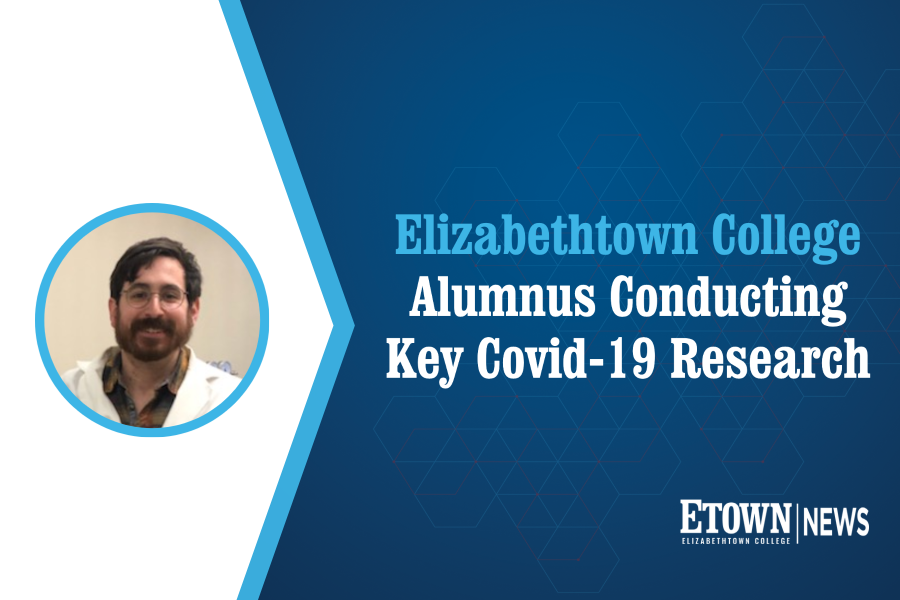Elizabethtown College alumnus Christopher Ryan ’17 has been conducting cutting-edge research on the COVID-19 virus since the onset of the pandemic as a current Binghamton University doctoral candidate.
Ryan’s research is focused on the binding of synthetic nucleic acids to double stranded RNA, with the purpose of binding to RNA sequences from viruses similar to COVID-19. The goal is to ultimately alter the biochemistry of the RNA, in a way that could seriously damage the virus.
“My work relies heavily on my background in synthetic organic chemistry but has afforded me the chance to learn techniques in RNA chemical biology and microbiology which has been critical in my development as a nucleic acids researcher,” Ryan said.
Ryan first began this project during a three-month break in lab work, due to the initial COVID-19 outbreak in early 2020. Working alongside Binghamton University Professor of Chemistry, Eriks Rozners, they were able to identify potential target sites in the genome of SARS-CoV-2 for their RNA-binding molecules called peptide nucleic acids (PNAs).
It was during Ryan’s sophomore year at Etown that he developed his love for chemistry and research, while working with Etown Professor of Chemistry James MacKay.
“Professor MacKay is a very detail-oriented scientist, which is a trait I strive to emulate,” Ryan said. “He imparted to me the importance of understanding the fundamentals of experiments, as without that understanding you lack the insight to properly interpret results and make improvements.”
During Ryan’s final year at Etown, Professor MacKay established a research partnership with Professor Rozner’s Chemistry Lab at BU. The research workshop allows Etown students the opportunity to learn more about RNA recognition. The workshop is sponsored by both Binghamton and Etown and funded by a National Science Foundation (NSF) grant.
“My undergraduate work helped prepare me for my current work as it gave me a broad background in chemistry and biology,” Ryan said. “For interdisciplinary projects such as mine, this is critical as understanding both the chemistry of making PNAs and the biochemistry of viral RNAs are key to the success of this research.”

